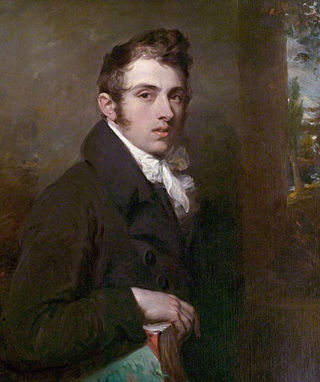Related Research Articles

Wisbech is a market town, inland port and civil parish in the Fenland district in Cambridgeshire, England. In 2011 it had a population of 31,573. The town lies in the far north-east of Cambridgeshire, bordering Norfolk and only 5 miles (8 km) south of Lincolnshire. The tidal River Nene running through the town is spanned by two road bridges. Wisbech is in the Isle of Ely and has been described as "the Capital of The Fens".

John Thurloe was an English politician who served as secretary to the council of state in Protectorate England and spymaster for Oliver Cromwell and held the position of Postmaster General between 1655 and 1660. He was from Great Milton in Oxfordshire and of Lincoln's Inn.

Pub names are used to identify and differentiate traditional drinking establishments. Many pubs are centuries old, and were named at a time when most of their customers were illiterate, but could recognise pub signs. The use of signage was not confined to drinking establishments. British pubs may be named after and depict anything from everyday objects, to sovereigns, aristocrats and landowners. Other names come from historic events, livery companies, occupations, sports, and craftsmen's guilds. One of the most common pub names is the Red Lion. This list contains both modern and historical examples.

William Hilton was a British portrait and history painter. He is also known as "William Hilton the Younger".

The Castle at Wisbech was a stone motte-and-bailey castle built to fortify Wisbech on the orders of William I in 1072, it probably replaced an earlier timber and turf complex. The layout was probably oval in shape and size, on the line still marked by the Circus. The original design and layout is unknown. It was rebuilt in stone in 1087. The castle was reputedly destroyed in a flood in 1236. In the 15th century, repairs were becoming too much for the ageing structure, and a new building was started in 1478 under John Morton, Bishop of Ely. His successor, John Alcock, extended and completed the re-building and died in the Castle in 1500. Subsequent bishops also spent considerable sums on this new palace. The Bishop's Palace was built of brick with dressings of Ketton Stone, but its exact location is unknown.

James Yorke was a British clergyman.

The Wisbech Canal was a broad canal from Wisbech, Isle of Ely in the Fenland area of Cambridgeshire, England. It ran from the River Nene at Wisbech to the Well Creek at Outwell now in Norfolk, which gave access to the River Great Ouse. It was abandoned in 1926 and filled in during the 1970s.

The Wisbech & Fenland Museum, located in the town of Wisbech in the Isle of Ely, Cambridgeshire, England, is one of the oldest purpose-built museums in the United Kingdom. The museum logo is W&F.

Walsoken is a settlement and civil parish in Norfolk, England, which is conjoined as a suburb at the northeast of the town of Wisbech, Isle of Ely, Cambridgeshire.

Harriet Waylett was an English actress and theatre manager.

The Parish Church of St Peter and St Paul or St Peter's Church is an Anglican church in Wisbech, Cambridgeshire, England. It is an active parish church in the Diocese of Ely. The church was founded in the 12th century.

Alderman Richard Young,, was a British merchant, shipowner and Liberal politician.
Anna Ross Brunton was an English actress and dramatist and part of an extended family of actors. She began writing for the stage at the age of fifteen and was acting by that time, sometimes in London, but mostly in the English provinces. She continued to perform until at least 1820.

The Angles Theatre is a theatre and historic Georgian playhouse in the market town of Wisbech, Isle of Ely, Cambridgeshire, England. It is among the oldest of Britain's theatres. The current premises consists of the original theatre building and a former library, originally an "infant" school built in 1837, both of which are Grade II listed. The patrons are Sir Derek Jacobi, Jo Brand, Claire Tomalin and Dame Cleo Laine.
Fanny Robertson, born Frances Mary Ross, was an actress and later the manager of the provincial theatres of the Lincoln Circuit.
Thomas Shaftoe Robertson was a British actor who became the manager of a circuit of theatres in and around Lincolnshire that he carried on for nearly half a century. He was able to attract well-known London actors to take parts in plays that he produced. His actress wife, Fanny Robertson, took over the Lincoln circuit upon his death.
Samuel Smith was an English photographer.

North Cambridgeshire Hospital is a healthcare facility in The Park, Wisbech, Cambridgeshire, England. It is managed by the Cambridgeshire and Peterborough NHS Foundation Trust.
Wisbech Town Council is a parish council covering the town of Wisbech in England. It is the successor to the Wisbech Municipal Borough. The Council is based at 1 North Brink, Wisbech where its committee meetings and full council meetings are usually held.

The Crescent consists of rows of terraced houses and religious buildings laid out as a circus in the town of Wisbech, England. Initiated by the developer Joseph Medworth and built between 1794 and c1815, it is a rare examples of a Georgian circus to be found in the United Kingdom. Most properties have Grade I or Grade II listed building status. Although some changes have been made to the various sites over the years, much of the Georgian facade remains as it was when first built. This development now lies within the Wisbech Conservation Area.
References
- ↑ "Wisbech and the Fenlands - The Wisbech Index". Contueor.com. 7 August 2006. Retrieved 2 December 2016.
- ↑ "To Let". Stamford Mercury. 27 February 1807. p. 2.
- ↑ Neil Walker; Thomas Craddock (1849). The History of Wisbech and the Fens. Richard Walker.
- ↑ "CAPITAL Ash and Elm Timber". Bury and Norwich Post. 21 February 1810. p. 3.
- ↑ Robert Bell (2001). Wisbech. Black Horse Books.
- ↑ Monger, Garry (2018). "The Castle". The Fens: Wisbech & Surrounding. April: 30.
- ↑ Ierubino, Aldo (2019). "Joseph Medworth: Making a Mark in the Landscape". Discovering Wisbech. February: 36.
- ↑ "RootsWeb: NORFOLK-L Medworth". Archiver.rootsweb.ancestry.com. 2 June 2001. Retrieved 2 December 2016.
- ↑ "Medworth". www.ancestry.com. Retrieved 9 September 2019.
- ↑ "Deaths". Bury and Norwich Post. 24 October 1827. p. 2.
- ↑ "Died". Stamford Mercury. 22 June 1838. p. 3.
- ↑ "Wisbech and Isle of Ely Gazette" . Retrieved 20 September 2019– via British Newspaper Archive.
- ↑ George Anniss (1977). A History of Wisbech Castle. EARO.
- ↑ George Anniss (1977). A History of Wisbech Castle. EARO.
- ↑ "This jewel of Georgian design". Fenland Citizen. 13 August 1975. p. 9.
- ↑ "Successful community asset list" (PDF). Fenland District Council.
- ↑ "Wisbech Castle". Archived from the original on 25 September 2011. Retrieved 27 August 2011.
{{cite web}}: CS1 maint: unfit URL (link) - ↑ anonymous (1834). The History of Wisbech. William Watts. p. 223.
- ↑ "Death of Joseph Medworth". Richmond Herald. 31 May 1889. p. 3.
- ↑ "Died". Cambridge Chronicle. 15 September 1838. p. 2.
- ↑ "Married". Stamford Mercury. 14 August 1835. p. 3.
- ↑ "Married". Cambridge Independent Press - Saturday 08 June 1850. p. 3.
- ↑ "Married". Leicester Chronicle. 7 January 1837. p. 3.
- ↑ "Married". Cambridge Chronicle & Journal. 19 May 1838. Retrieved 5 December 2019.
- ↑ "Lincolnshire Chronicle" . Retrieved 24 September 2019– via British Newspaper Archive.
- ↑ "Stamford Mercury" . Retrieved 25 September 2019– via British Newspaper Archive.
- ↑ "Leicester, Stamford and Rutland Mercury" . Retrieved 20 September 2019– via British Newspaper Archive.
- ↑ "Wisbech and Isle of Ely Gazette" . Retrieved 20 September 2019– via British Newspaper Archive.
- ↑ "Attempted Suicide". Norfolk News. 9 January 1858. Retrieved 5 December 2019.